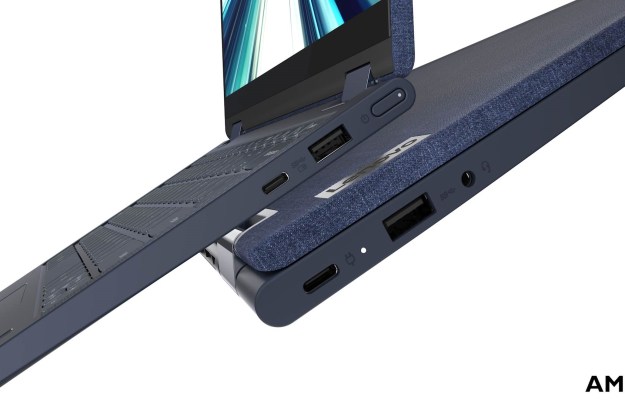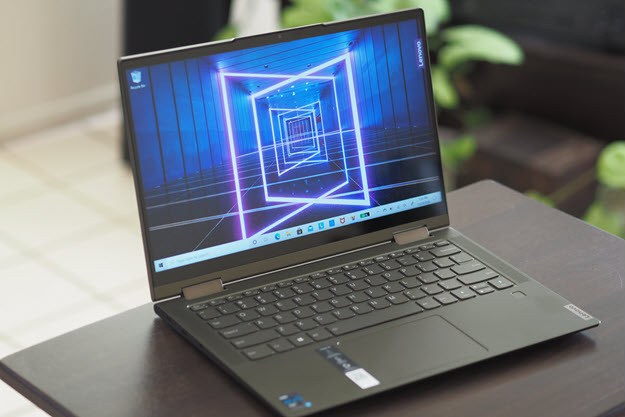
“The Lenovo Yoga 7i performs well for a Core i5 if you're primarily using the CPU. Fire up the GPU and you'll be disappointed.”
- Excellent productivity performance for a Core i5
- Solid build quality
- Simple good looks
- Good keyboard and touchpad
- Subpar graphics performance
- Disappointing battery life
- Display lacks contrast
Lenovo is on a marketing kick, renaming laptops but keeping them the same except for updated internals. The Lenovo Yoga 9i is a renamed Yoga C940, for example, and the Yoga 7i is a renamed Yoga C740. While the laptops are identical to their predecessors on the outside, the internal upgrades are significant — both received Intel’s Tiger Lake platform. For the Yoga 7i, that promises improved performance while leveraging whatever other strengths (and weaknesses) possessed by the Yoga C740 before it.
I received a midrange configuration of the Yoga 7i to review, an $899 model available at Best Buy that’s equipped with an 11th-gen Intel Core i5-1135G7 CPU, 12GB of RAM, a 512GB PCIe solid-state drive, and a 14-inch Full HD (1,920 x 1,080) IPS display. That makes the Yoga 7i a tweener of sorts — not a budget laptop but not premium, either. You can push the laptop over $1,100 by upgrading to a Core i7, 16GB of RAM, and a 1TB SSD, but on paper, my review configuration would make a good productivity workstation for the money. The Tiger Lake upgrade worked out well for the Yoga 9i — will it do the same for the Yoga 7i?
Design
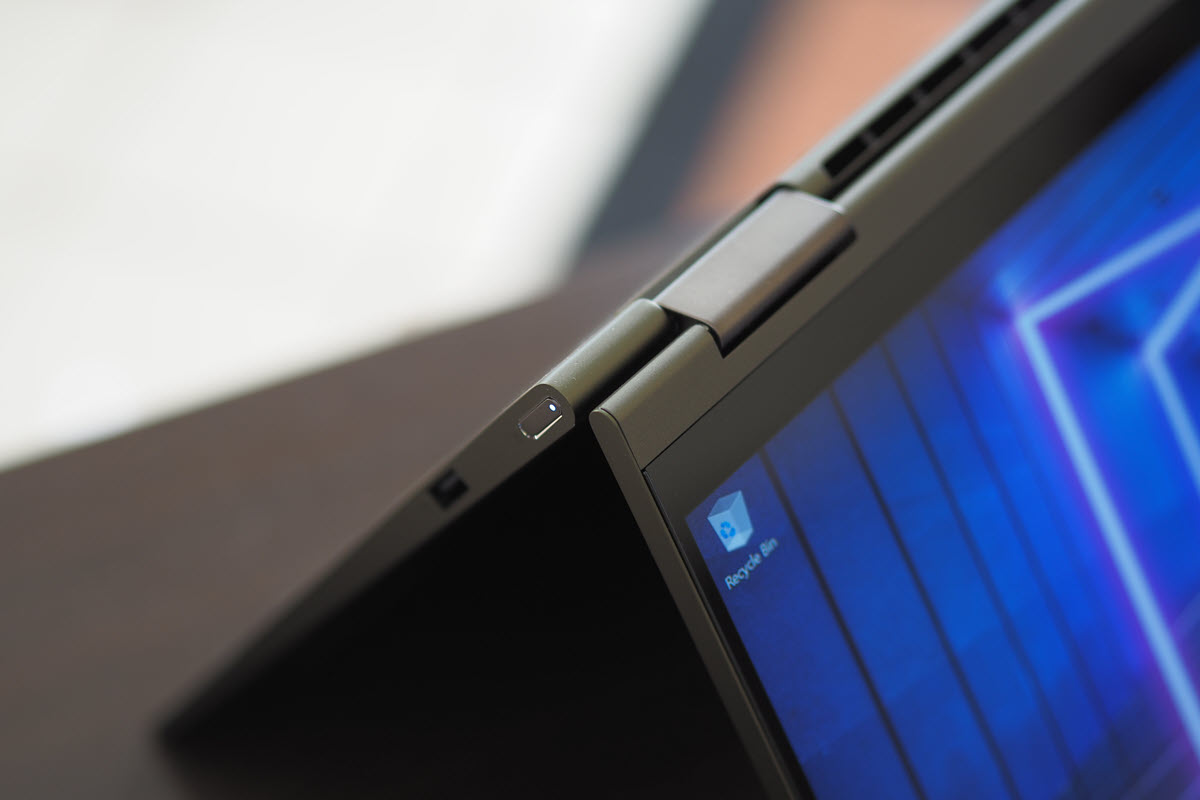
As mentioned earlier, the Yoga 7i is exactly like the Yoga C740 before it. That means it’s a rather conservative design with simple lines and angles and absolutely no bling except for the metallic logo on the lid’s upper-left corner. That’s been Lenovo’s thing for a few years now, to design
In terms of its build quality, the Yoga 7i is well worth its price — and more. Like all Lenovo midrange or better
The Yoga 7i isn’t quite in the same league as some more recent 2-in-1s, like the HP Spectre x360 13 and the Asus ZenBook Flip S, in terms of following the trend toward tiny bezels. It enjoys smaller bezels along the side, but the top bezel is a bit thick and the chin is chunky by recent standards. That makes the Yoga 7i both less modern looking and a bit larger than it might have been. It’s not the thinnest laptop at 0.61 to 0.69 inches, and it’s a bit heavy at 3.09 pounds. The Asus ZenBook 14 UX425 clamshell is much thinner at 0.54 inches and weighs just 2.58 pounds, while the Spectre x360 13 is 0.67 inches thick and weighs 2.88 pounds. In use, the Yoga 7i is comfortable in all modes except tablet mode, where it’s a bit unwieldy.
Connectivity is a bit light for a 14-inch convertible, with two USB-C ports with Thunderbolt 4 support on the left-hand side to go with a 3.5mm audio jack and a USB-A 3.2 port on the right-hand side. Unfortunately, there’s no SD card reader, which will be a disappointment to creative types. Wireless connectivity is up-to-date with Wi-Fi 6 and Bluetooth 5.0.
Performance
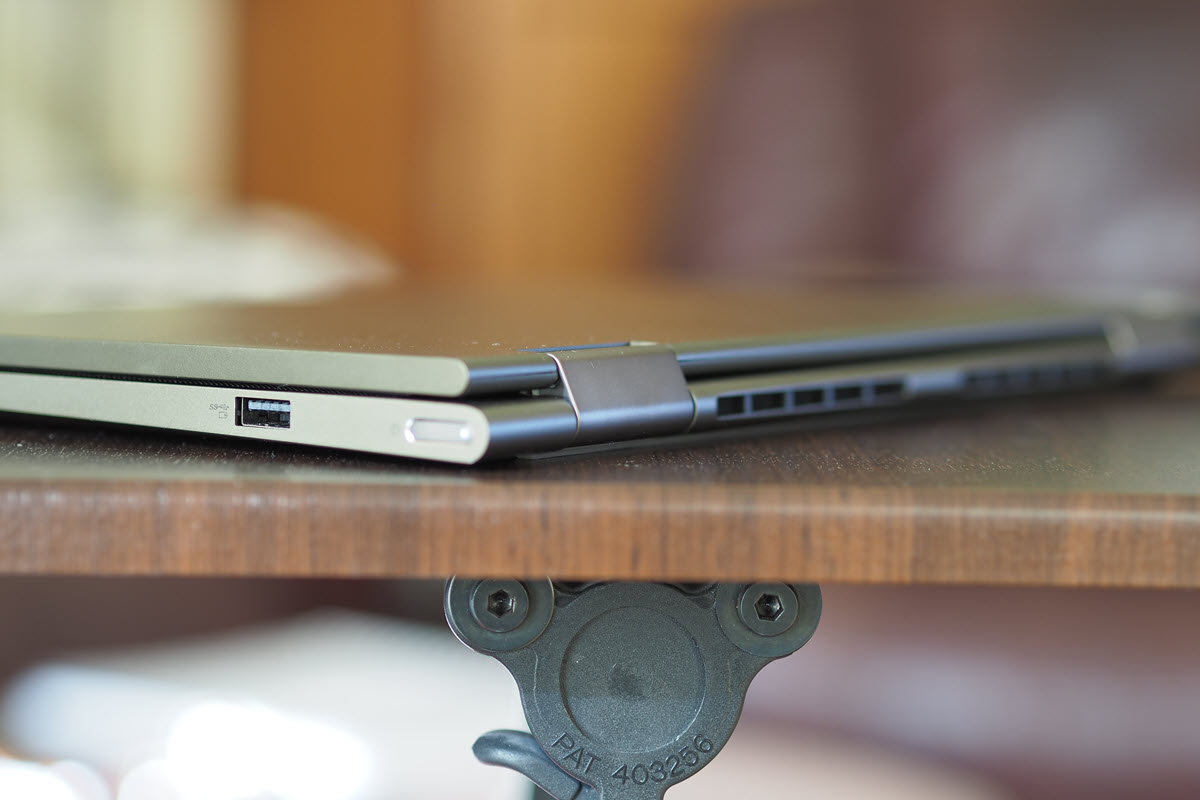
My review Yoga 7i is the first I’ve tested with the Tiger Lake Core i5-1135G7 CPU, and I was looking forward to seeing how it compares to the Core i7s I’ve been testing. Suffice it to say, I was pleasantly surprised.
To begin with, in Geekbench 5, it scored 1,357 in single-core mode and 4,246 in multi-core mode. That’s in line with what I expected relative to a laptop like the Dell XPS 13 9310 with its Core i7-1165G7. That laptop scored a more impressive 1,540 and 5432, while the even faster Acer Swift 5 managed 1,580 and 5,836.
Stepping up to a real-world test, using Handbrake to encode a 420MB video as H.265, the Yoga 7i required just under 3.5 minutes. The XPS 13 in its normal performance mode was just 6 seconds faster. Even in performance mode, the XPS 13 beat the Yoga 7i by just 20 seconds. The Swift 5 was 17 seconds faster. I consider that a win for the Core i5-equipped Yoga 7i.
In Cinebench 20, the results were similar. The Yoga 7i score 513 in single-core mode and 1,853 in multi-core mode, compared to the XPS 13 at 518 and 1,921 (525 and 1,988 in performance mode). The Swift 5 was a bit faster at 542 and 2,091, but still, the Yoga 7i’s showing was impressive. It actually beat out the
In terms of its CPU, the Yoga 7i punches above its weight class and is a great option for anyone looking for a solid productivity laptop with a little better energy efficiency. You probably won’t notice the difference in real life from a laptop with an 11th-gen Core i7.
Gaming
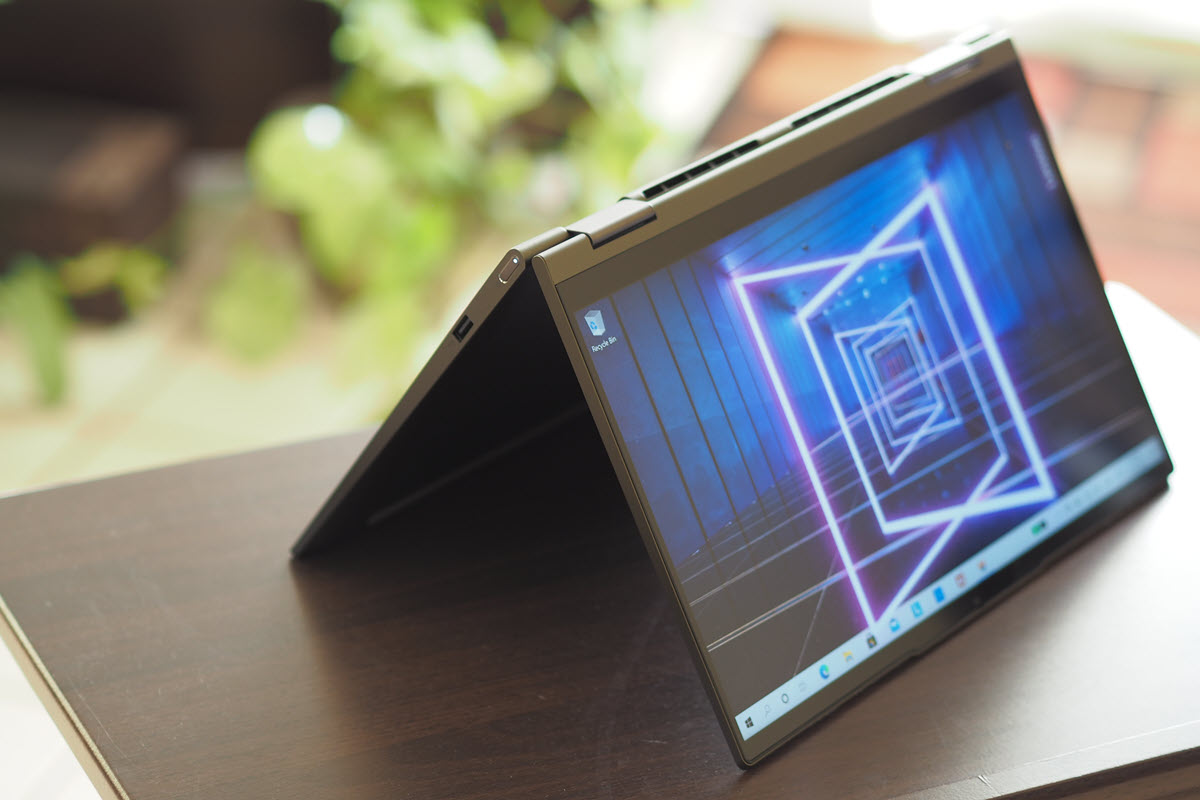
The Yoga 7i’s graphics performance, though, was underwhelming. I was quite surprised at how much slower the Yoga 7i was than other Intel Iris Xe
First, the Yoga 7i wasn’t impressive in the synthetic 3DMark benchmark. It scored just 913 in Time Spy, compared to the XPS 13 at 1,647 and the Acer Swift 5 at 1,686. That’s faster than an Intel Iris Plus laptop like the 10th-gen Acer Swift 5 that scored 743, but not by much.
That performance carried through to real gaming. I ran Civilization VI on the Yoga 7i, and it managed just 28 frames per second (fps) at 1080p and medium graphics. That’s significantly slower than the Acer Swift 5 at 53 fps and even the
I’m not sure if this performance level is unique to the Yoga 7i, or it’s what can be expected from the Core i5-1035G7 in general. If it’s the latter, then that’s something to keep in mind when selecting your next laptop. While the Core i7’s graphics perform much like an entry-level GPU such as the Nvidia GeForce MX350, the Core i5 in the Yoga 7i is closer to Intel’s Iris Plus integrated graphics.
Display
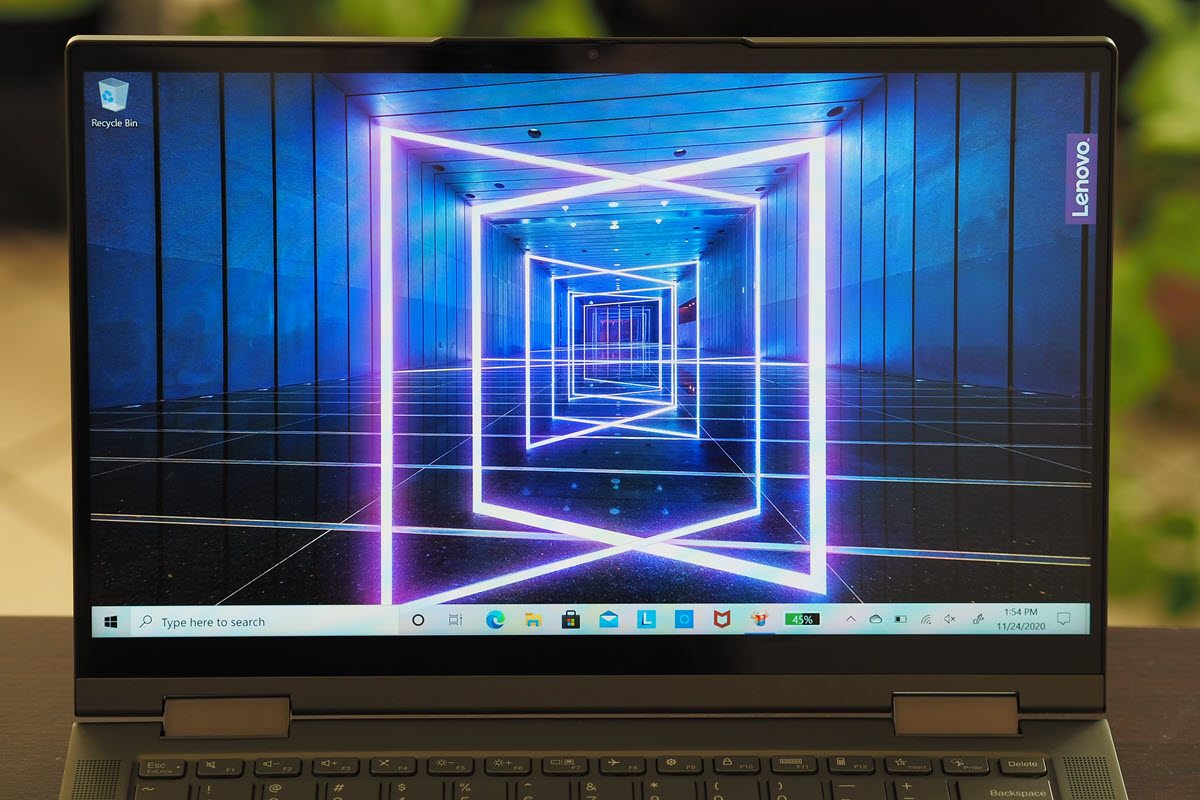
The Yoga 7i uses a 14-inch Full HD IPS panel for its display, which I find to be the absolute limit for Full HD resolution. I hate pixelated text, and in fact, I prefer 4K displays even on 13.3-inch
Turning to my colorimeter, I also found the display to be average in most areas. By that, I mean average for premium or near-premium
Like the Yoga 9i, the Yoga 7i’s display underperformed in terms of contrast, where it hit just 690:1. That’s an inferior score for a premium laptop today, most of which approach the 1000:1 ratio that we like to see. The Swift 5 hit 950:1, and the XPS 13 achieved 1350:1. Such a low contrast can make the display look washed out, especially when viewing black text on a white background (not very favorable for a writer).
Overall, I found the display usable, with good colors, but I did notice the deficiency in contrast. I wouldn’t recommend this display for anyone who really wants their text to pop. Of course, it’s also not a laptop for creative professionals, as it lacks the kind of color width and accuracy that they crave.
The audio was impressive for a thin and light laptop, with plenty of volume from upward-firing speakers and no distortion. Mids and highs came through clearly, but as usual, the bass was lacking. The Yoga 7i can’t match the Yoga 9i’s soundbar, which is built into the hinge, but it’s good enough for solo Netflix sessions. Music will make you want headphones, and if you’re sharing your screen, then a pair of Bluetooth speakers wouldn’t hurt.
Keyboard and touchpad

The Yoga 7i has the same keyboard as most Yogas. Personally, I find it a bit shallow, and the mechanism is a bit mushy compared to more precise switches on
The touchpad is nicely sized given the available space, and it’s a Microsoft Precision touchpad with a responsive and precise feel. Windows 10 multitouch gestures are well-supported, but I did find the click to be a little too loud. The touch display is responsive and precise as well, giving you flexibility in controlling your cursor, tapping buttons, and scrolling through long webpages. While the display supports the $100 Lenovo active pen, that accessory is not included in the box.
Windows 10 Hello support is provided by a fingerprint reader that’s accurate and responds quickly. I had no issues logging in without using a password.
Battery life
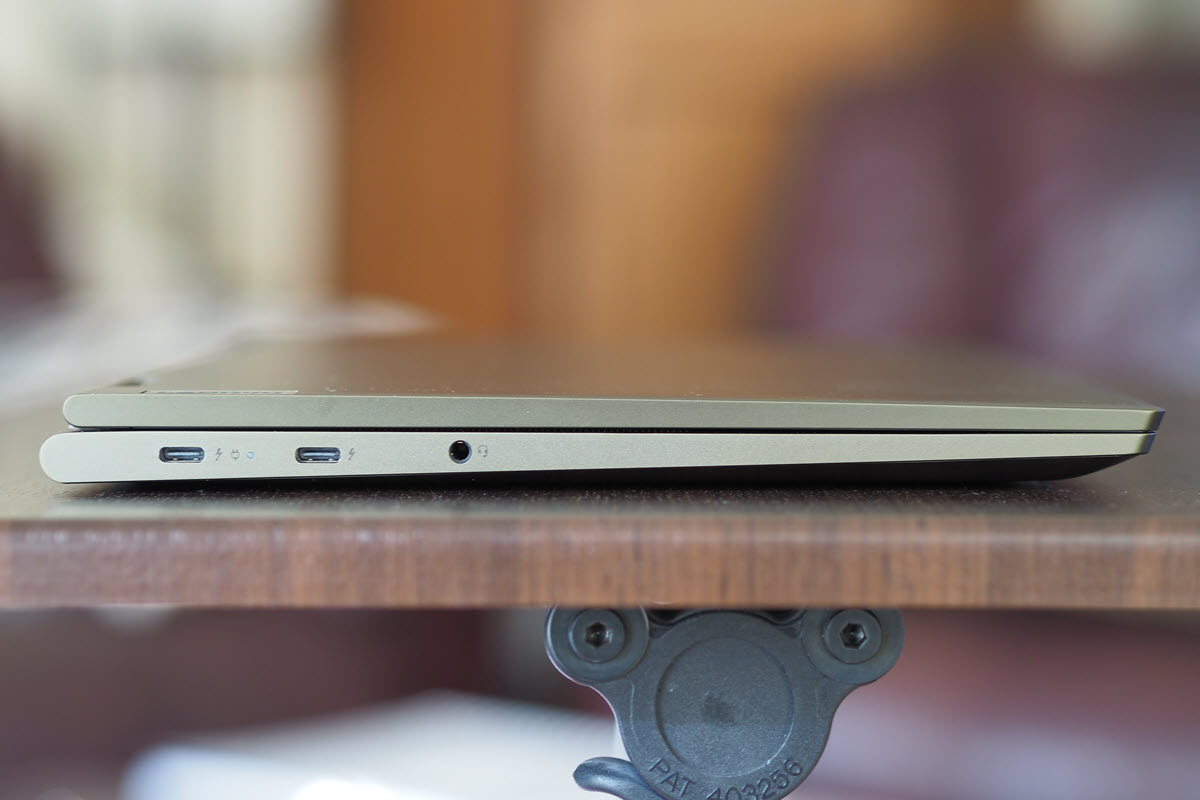
Intel’s Evo certification requires that a laptop exceed nine hours of battery life while performing real-world work. I’m not sure the Yoga 7i earns that certification, even with 71 watt-hours of battery capacity (a good amount for a 14-inch laptop), at least by my testing.
As with all the Tiger Lake systems I’ve reviewed, I couldn’t get the Yoga 7i to finish the Basemark web benchmark battery test. That’s what we use to test longevity under load, and so I used the PCMark 10 Gaming test instead to at least compare it to other Tiger Lake systems. In this test, the Yoga 7i lasted for 2.45 hours. That’s considerably less than the XPS 13 9310, which lasted for almost four hours, but an improvement over the Swift 5 that couldn’t quite make it to two hours.
In our web-browsing test, which best emulates productivity battery life, the Yoga 7i lasted for just over eight hours. That’s an average score and less than the nine hours required for Evo certification. It’s also like what I’ve seen from other Tiger Lake systems such as the Acer Swift 5, which runs with a more power-hungry Core i7. I was hoping for more from the Yoga 7i’s Core i5.
In our video test that loops a Full HD Avengers trailer until the laptop hibernates, the Yoga 7i lasted for 12.5 hours. That’s a little better than the XPS 13 and an hour longer than the Swift 5, but I was nevertheless hoping for more.
Whether the Yoga 7i will get you through a full day’s work depends entirely on your workflow — if you push the CPU or GPU hard at all, you’re unlikely to make it. And I remain uncertain about the nine hours required for Evo certification — that’s something that no Tiger Lake system I’ve tested so far can acheive.
Our take
The Lenovo Yoga 7i shows off the Tiger Lake Core i5’s CPU performance nicely, but it also demonstrates its graphical weakness. It’s a well-built laptop with good input options, a display that’s colorful but lacks contrast, and a long-lasting battery.
Ultimately, the Yoga 7i has too many compromises, even at its $899 price point. You can do better.
Are there any alternatives?
The HP Spectre x360 13 is a strong alternative to the Yoga 7i despite the smaller display. It’s more striking in its appearance, it’s quite a bit smaller and lighter, and it has a much better keyboard. We’ll have to wait until we receive a Tiger Lake version, though, to see how it performs.
The Dell XPS 13 9310 is another strong competitor, again albeit with a smaller display — it’s a bit closer in size, though, given its 13.4-inch dimensions and 16:10 aspect ratio. The XPS 13 is just as well-built, has a much better display, and not surprisingly, will cost you more money.
How long will it last?
The Lenovo Yoga 7i is as well-built as you’ll find in this price range, and it should last you for years of service. Its components are modern and should keep you up to date as well. Just remember to buy an extended warranty if the standard 1-year warranty doesn’t cut it.
Should you buy it?
No. There are better options for the same or just a little more money.
Editors' Recommendations
- Best Lenovo laptop deals: Save on Yoga and ThinkPad laptops
- Microsoft Surface Pro 9 vs. Lenovo IdeaPad Duet 5i: which 2-in-1 is best?
- Lenovo Slim 7i Pro X hands-on review: A do-it-all laptop
- Lenovo Yoga 9i hands-on review: Sight for sore eyes
- Lenovo’s gorgeous new redesign of Yoga laptops brings rounded edges, OLED screens

